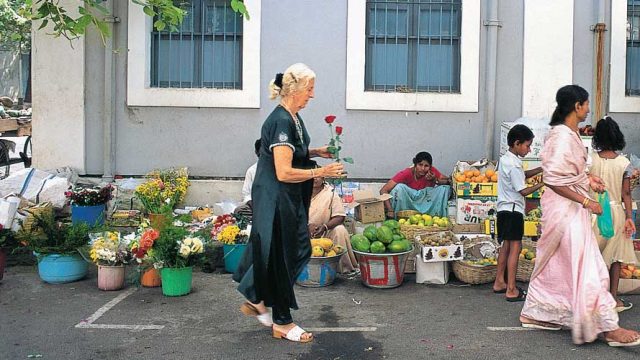The French built a base in Pondicherry in 1674. The town was planned with a canal dividing it into the Ville Noir (Black Town), where the masses made their home, and the Ville Blanche (White Town), where the foreign expatriates and French diplomatic corps thrived. When the French turned the town over to India in 1954, a number of people who stayed on chose French citizenship. French is still an official language of this Union Territory. Puducherry (previously called Pondicherry) charms tourists with its tree-lined avenues and painted colonial buildings.
Things to See & Do
Beach Road
The wind-swept Beach Road is lined with 18th and 19th century buildings including the War Memorial, the 88-ft-tall lighthouse and the French Consulate General. Running parallel to all these stately buildings is a popular promenade.

Rue Dumas
The oldest street in the city, this is where the first French settlers lived. Today, it is home to the Hotel de Pondicherry set in a 19th-century villa, the immaculately maintained Ecole Francaise d’Extreme Orient, the statue of Joan of Arc and the Notre Dame des Anges Church.
Pondicherry Museum
This beautiful building, with its huge rooms, wide windows and high ceilings, has a collection that includes Chola bronzes, beads and coins from the Roman-era excavations at Arikamedu, old local vehicles, and other interesting artefacts.
The Tamil Quarter
The streets are narrower here, the houses smaller and the temples bigger. A few traditional houses are still left untouched; most others have metamorphosed into urban dwellings. The Mansion of Ananda Rangapillai built in 1738 is a unique specimen of Franco-Tamil architecture. Rangapillai (1709–61) was one of the most successful agents (dubash) of the French Compagnie. This unique house has a Tamil ground floor and a European first floor with a courtyard in the middle. Unfortunately, visits are no longer encouraged by the owners.
Immaculate Conception Cathedral
The Church of the Immaculate Conception is the biggest church in Puducherry. This stately late-Renaissance structure was rebuilt in 1791.
Sri Aurobindo Ashram
The pearl grey-and-white Ashram buildings are the most orderly part of the city. Only the area where the mortal remains of Sri Aurobindo Ghosh, Indian nationalist and philosopher, and his spiritual partner, The Mother, are interred is open to the public. A visit to the Ashram is conducted in pin-drop silence. The rooms where The Mother and Sri Aurobindo lived are open to viewing only on certain days of the year.
Tip The Ashram Visitors Information Centre (Tel: 2233604) can be contacted for visiting days and timings

Where to Stay & Eat
Hotel de L’Orient (Tel: 0413-2343067; Tariff: ₹3,500–8,000) has excellent food. Villa Helena (Cell: 09787826845; Tariff: ₹4,500–6,000) is a heritage option and Maison Perumal (Tel: 2227519; Tariff: ₹8,650) is run by the CGH Earth group.
The Information
When to go November–February
Tourist offices
Puducherry Tourism Dev Corp, Beach Road, Tel: 2335371, tourism.puducherry.gov.in
STD code 0413
Getting There
Air Nearest Airport: Chennai (169km/ 3hrs) Taxi ₹2000 approx
Rail Convenient railhead: Chennai Central Road. It’s a smooth ride down the East Coast Road from Chennai Bus Every half hour from CMBT in Chennai




